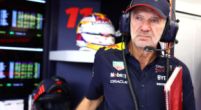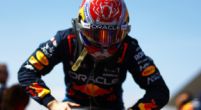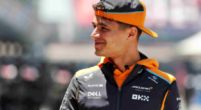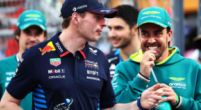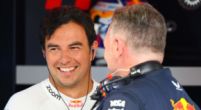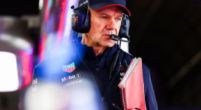VIDEO | Have Mercedes forced the FIA to make F1 rule changes?
It has been announced that the FIA have approved changes to floor regulations in Formula 1 in order to prevent porpoising moving forwards.
The switch to ground-effect cars for 2022 has seen the return of vertical oscillation, known as porpoising, in F1, which has caused multiple issues this season.
As far as a definition goes, porpoising is when a Formula 1 car bounces up and down caused by an increase, then a sudden decrease, of downforce.
Azerbaijan’s Baku City Circuit was a particular track of concern, with several drivers complaining of neck and back problems caused by the severe bouncing of their cars on the long start/finish straight.
After the Azerbaijan Grand Prix, the FIA said: “The FIA has decided to intervene following consultation with its doctors in the interests of safety of the drivers,” they said. They went on to explain how a drivers entire focus should be on driving rather than worrying about excessive fatigue and lapses of concentration. They also cited recent back pain reported by drivers, Lewis Hamilton being a key example of this.
And, it has now been revealed that changes to the rules will occur in an attempt to combat porpoising.
WHAT ARE THE CHANGES?
From the Belgian Grand Prix at the end of August onwards, the FIA will monitor the porpoising issues and will enforce changes to the stiffness requirements of the underfloor plank and skids. This means bye-bye flexi-floors.
Then for 2023, the FIA are hoping to stop porpoising all-together by raising floor edges by 15mm. In addition to this, the diffuser throat height will be raised and the diffuser edge stiffness will be increased. Furthermore, there will be an additional sensor on the floor to monitor porpoising.
F1’s governing body has insisted that: “care has been taken to avoid any impact on the teams’ design of the mechanical components”
FIA president Mohammed Ben Sulayem said of the changes: “I have personally discussed this matter with all of the teams and drivers, and while of course there are some differences in opinion owing to varying competitive positions, it is very clear that the FIA has a duty to act and ensure that the drivers are not put at undue risk of injury as a result of this phenomenon.”
HAVE MERCEDES PLAYED A ROLE IN THE PORPOISING CHANGES?
It may seem ludicrous to suggest, but Mercedes may well have put pressure on the FIA to make porpoising changes, because this news certainly helps them.
Of all the teams on the 2022 F1 grid, the Mercedes AMG team have suffered from porpoising the most during this season, with their issues at Baku very worrying. Of course, they want to protect the safety of their drivers, but reducing the speed of their car would’ve realistically reduced the impact of porpoising - but it seems they weren’t willing to make that sacrifice, which is understandable.
Mercedes arguably forced the FIA to remove Michael Masi from his post as race director, and although I don’t think the FIA had any other choice, they do have previous.
After Lewis Hamilton went on radio silence after the final race at Abu Dhabi, it was clear Mercedes wanted Masi out, and it became apparent it may be Masi or Hamilton in 2022 - and the FIA couldn’t risk losing the sport’s most successful driver.
So, with Mercedes struggling with porpoising in 2022, there’s certainly a case that they forced the FIA’s hand into making rule changes to combat the issue.
Red Bull team boss Christian Horner has even said: “A significant rule change is being pushed through so that one team can make their car lower and benefit from their concept.”
Mercedes, McLaren and Aston Martin, all of whom run a Mercedes engine, voted for porpoising changes and they’ve now got their way.
If it had been a lesser team than Mercedes, maybe Haas for example, struggling with porpoising, would the FIA have been so willing to make changes to the rules? That’s just speculation, but it may hold some weight.
After all, the safety of the drivers comes first so the FIA had to intervene, but it does raise questions as to whether F1’s governing body felt pressured to make the decision due to Mercedes.











